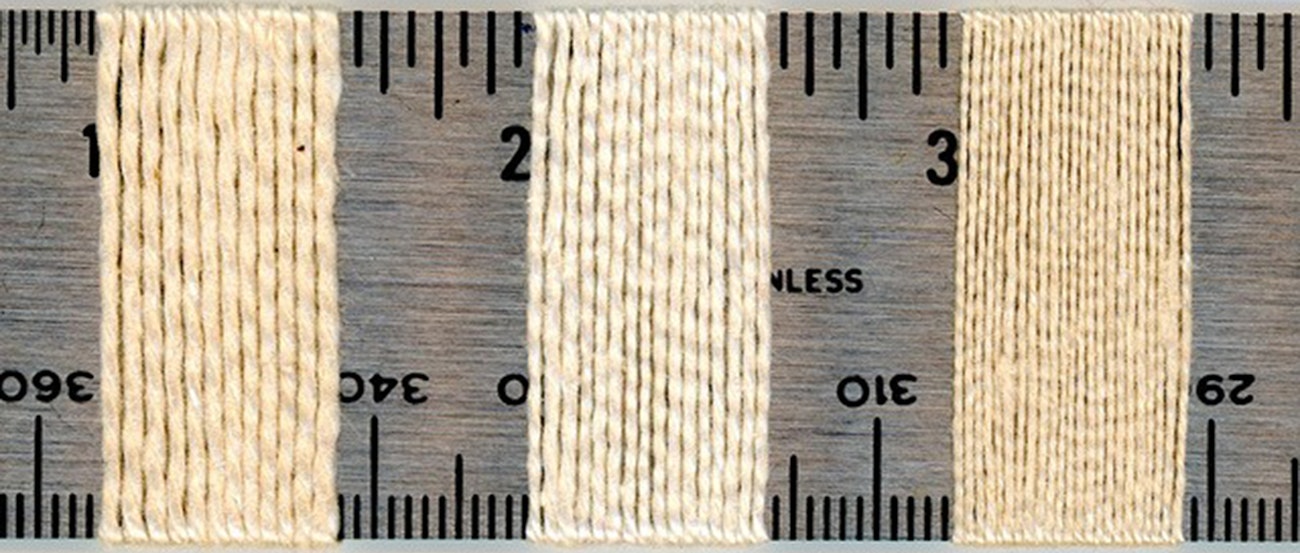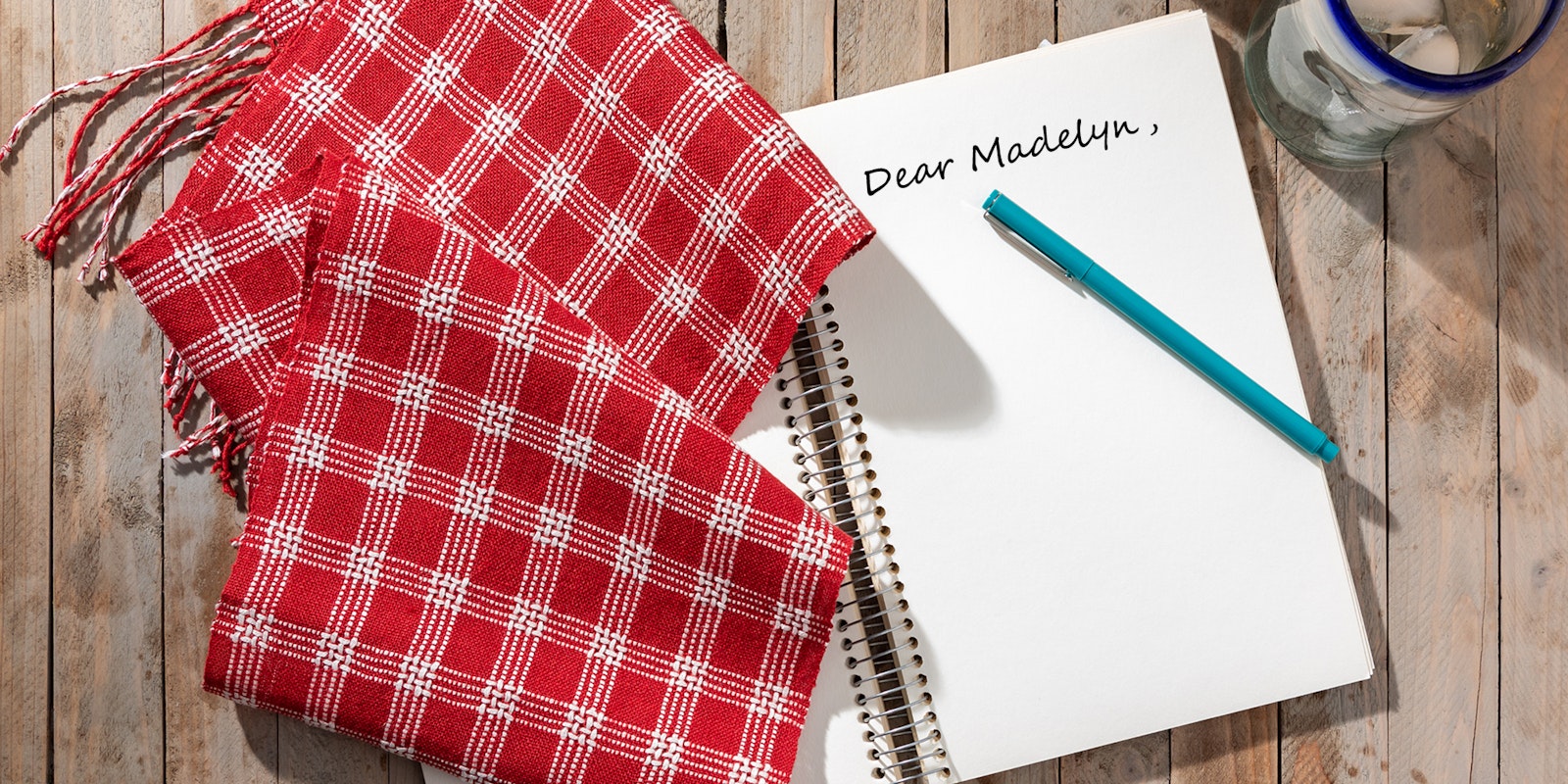Hi Madelyn!
I have a question about warp setts. For 4-shaft waffle weave using 8/2 cotton at 3,360 yd/lb, the recommended warp sett is usually 20–24 epi. So should it follow that the sett using 16/2 cotton (twice as fine) for the same weave would be twice that sett (40–48 epi)? I ask because Handwoven’s Master Yarn Chart lists the setts using 8/2 cotton for lace, plain weave, or twill as 16, 20, or 24, but for 16/2 cotton (6,720 yd/lb) as 24, 30, or 36. So the sett for a yarn that is twice as fine seems to about one-and-one-half times as close.
—Rachel
Hi Rachel!
This is an interesting question! On the ruler shown below, I have wrapped three yarns for one-half inch each. Whatever the number of strands you can wrap in a half inch is usually the appropriate warp sett (ends per inch) for a medium plain weave. (You wrap a half inch because the warp threads will be spread to a one-inch width by the weft threads of the same thickness that cross between them in a plain-weave interlacement.)
 Wrapping yarns for one-half inch gives you the plain-weave sett for regular plain weave. Here from left to right are: 3/2 cotton, 5/2 cotton, and 10/2 cotton. Photo by Madelyn van der Hoogt
Wrapping yarns for one-half inch gives you the plain-weave sett for regular plain weave. Here from left to right are: 3/2 cotton, 5/2 cotton, and 10/2 cotton. Photo by Madelyn van der Hoogt
From left to right on the ruler are: 3/2 cotton (1,200 yd/lb) at 12 wraps; 5/2 cotton (2,100 yd/lb) at 16 wraps, and 10/2 cotton (4,200 yd/lb) at 24 wraps. If I had included 20/2 cotton, 36 wraps would have been the likely result.
The yd/lb label given to each yarn is a length to weight measurement—not really an accurate indicator of the exact thickness of the yarn. The 10/2 thread is not quite twice as fine as the 5/2 thread, for example. The thickness of the yarn is affected by the nature of the fiber itself and how it is spun.
Wrapping a ruler is your sure way to determine the plain-weave sett for any yarn. If you need the yarns closer for twill (or you want something other than a medium plain weave), you can usually guess how to raise or lower that number. For twills, the sett will be closer, (the longer the floats in the draft, the closer the threads). The Master Yarn Chart is also an incredible resource for finding the plain-weave starting point for almost every yarn.
—Madelyn
If you have a weaving question we would love to hear from you! Please email Madelyn.

